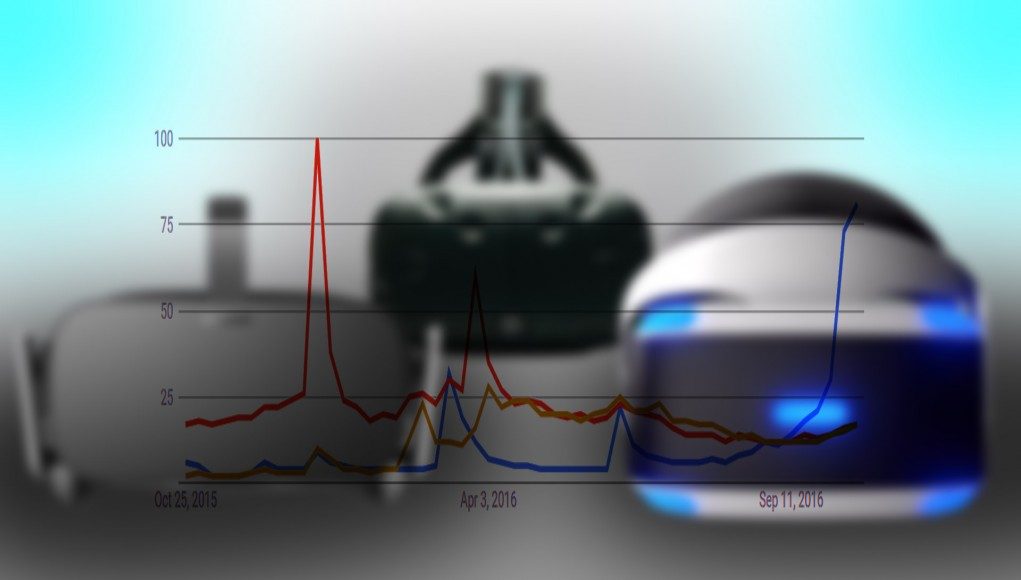It’s been a long time coming, but PlayStation VR is finally here. As the least expensive option among the top three contenders, not to mention a 40+ million install base of PS4 owners, many think that PSVR could be the best selling VR headset of 2016. As far as search trends are concerned, consumers seem highly interested amid the headset’s launch.
Comparing search interest via Google Trends for “PlayStation VR”, “Oculus Rift”, and “HTC Vive”, we see some interesting activity over the last 12 months.

While Oculus Rift pre-orders generated the most interest at any point within this timeframe, we can see that the launch itself generated less search activity. Both the HTC Vive and PlayStation VR did the reverse: there was slightly more search interest surrounding Vive’s launch than its pre-orders, and in the case of PlayStation VR, search interest has accelerated rapidly amid the headset’s launch, putting it far above current search interest for the Rift and the Vive, and far above the levels of search interest of the other two headsets at launch.
Now, before you jump to any conclusions, search interest doesn’t necessarily translate to sales or customer satisfaction. The most we can say from the available data is that PlayStation VR’s launch has generated greater search interest than the launch of the Rift or the Vive. Exactly why that’s the case takes us into the realm of speculation.
The most obvious variable to consider is marketing; before someone can search for a specific product, they have to know about it. And from what we’ve seen, Sony’s promotion of PlayStation VR’s launch has been suitably large, and has apparently exceeded what we saw of the marketing effort from Oculus and HTC/Valve during the launch of the Rift and Vive. Sony has run TV ads and even teamed up with Taco Bell to give away headsets.
Another variable to consider is Sony’s huge PS4 install base. Every one of its 40+ million consoles out there can power the PlayStation VR system. Meanwhile, a much smaller number of PC’s meet the minimum specifications for the Rift and Vive, meaning Sony has a larger pool of customers who might be interested in searching for the headset on the grounds that they already own the prerequisite hardware.
That’s also 40+ million consoles that Sony can reach directly via advertisements on the system software itself; the company is actively promoting the headset via the PlayStation Store on the PS4.
Whether it’s marketing, a built-in install base, or something else, it does seem to be working in Sony’s favor. The PSVR search trend appears to still be on the rise, and we’ll have to wait to see how high it will go.







